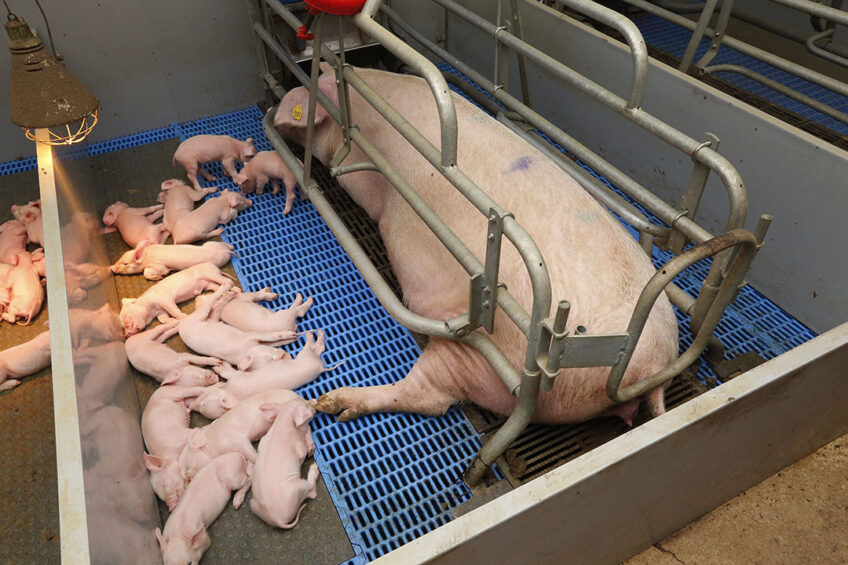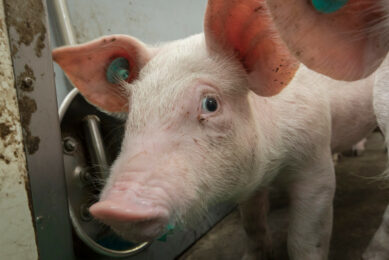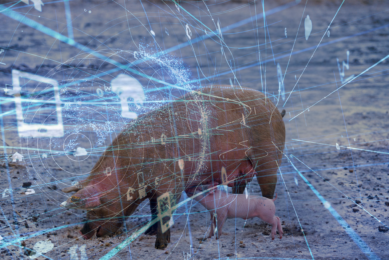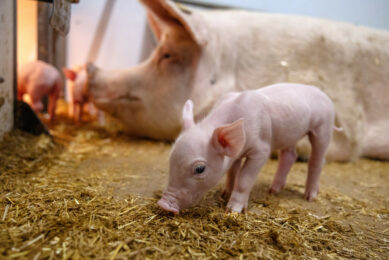9 genetic factors related to pre-weaning mortality

How can pre-weaning piglet mortality levels be reduced? That is one of the major questions in swine production these days, with solutions being considered in management, health and nutrition. Genetics can also play an important role in pushing the survival rates up. Here are 9 ideas how.
Piglet mortality is a societal concern and an economic issue for the swine industry. The average total piglet mortality – including stillbirths and live-born deaths – ranges from 16% to 20%, which in most breeds means that pre-weaning mortality amounts to 2. Factors such as genetics, environmental conditions, health, temperature, nutrition, social interaction and management all impact pre-weaning mortality.
In addition, piglet survival is associated with traits including litter size, birth weight, variation in birth weight and litter size, gestation length, farrowing duration, mothering ability of the sow nursing the piglet, congenital defects, the number of teats and colostrum. Therefore, genetic selection for improved survival rate or traits related to survival rate is a promising way to reduce mortality faster. This article will discuss the relationship between piglet survival and the related traits.
 Piglet survival and litter size
Piglet survival and litter size
There are positive phenotypic and genetic correlations between litter size and mortality in Landrace and Yorkshire lines, where the phenotypic correlations are 0.14 and 0.09 and the genetic correlations are 0.28 and 0.22 respectively. That is, increased litter size decreases piglet survival rate.
 Piglet survival and birth weight
Piglet survival and birth weight
Individual birth weight in pigs is a maternal trait with estimated heritability of 0.04 to 0.18. Litter weight is the sum of all piglets’ weight with a heritability ranging from 0.3 to 0.4. Uterine capacity is an important maternal trait in animal breeding and production. Uterine capacity is the number of piglets a uterus can provide for, and it is an important determinant of the litter weight. The sow’s uterus stretches with increasing litter size; thus, constant selection for litter size results in increased birth weight and improved survival rate.
 Piglet survival and uniformity
Piglet survival and uniformity
Litter weight is a moderately heritable trait, and increasing litter size decreases average birth weight and increases within-litter variation in birth weight. However, high birth weight piglets are at risk of stillbirth due to dystocia. Within-litter variation in birth weight has a heritability in the range of 0.04 and 0.10. It is recommended to select against standard deviation in piglet birth weight to improve piglet survival during lactation. In addition, parity is an essential factor for litter size in pigs. On average, first parity litters are significantly smaller than second, and third parity litters are larger than second parities. Therefore, parity correction needs to be added to the genetic model to have the correct genetic parameter estimation.
 Piglet survival and gestation length
Piglet survival and gestation length
Gestation length is a highly heritable trait (0.2–0.3), with genetic variation attributed to both dam and litter genes. Maternal factors initiating the farrowing process and reproductive traits around the insemination time affect gestation length. There is a relationship between gestation length and livability of piglets that are less physiologically mature at birth.
In addition, service sire breed and genetic line affect gestation length. Uniformity in birth weight positively correlates with survival rate due to a lack of very heavy piglets that send the birthing signal later and increase gestation length. Selection for increased litter size decreases individual birth weight and reduces gestation length.
 Piglet survival and farrowing duration
Piglet survival and farrowing duration
Farrowing duration has a low heritability (0.08–0.10). On average, duration of active farrowing, including litter and placenta expulsion, is about four hours. However, 18% of sows have a farrowing duration longer than five hours, which leads to fatigue, impacts sows’ ability to complete farrowing, lowers piglets’ vitality and ability to suckle, increases piglets’ birth weight and the incidence of stillbirths, causes asphyxia, lowers growth rate during lactation and decreases weaning weight in piglets. In addition, large litter size lengthens farrowing duration by 12 minutes for each piglet.
 Piglet survival and mothering ability
Piglet survival and mothering ability
Mothering ability is the sow’s potential to nurture her live-born piglets until weaning. Mothering ability includes a wide range of behaviours, such as crushing and aggression in a group setting during gestation, These correlate inversely with piglet survival rate until weaning. It also affects lower glucose tolerance in late gestation due to the decrease in insulin sensitivity in preparation for lactogenesis. Sow behaviour during parturition – whether they spend more time lying down in a lateral position with teats available to the piglets – relates to the time for piglets from first standing to finding a teat and taking the first colostrum.
 Piglet survival and congenital defects
Piglet survival and congenital defects
Congenital defects such as cryptorchidism and scrotal/inguinal hernias have heritability estimates of 0.26 and 0.31 respectively. A significant candidate region in chromosome 9 of Duroc pigs has been identified to recognise pigs with recessive variants, which comprise 8.2% of the population. Selection for reduced congenital defects improves survival rate.
 Piglet survival and number of teats
Piglet survival and number of teats
Number of teats is a heritable trait (0.2–0.5) with genetic variation affecting pre-weaning survival. Research has shown that an increase of one functional teat in second parity sows improves piglet survival by 3.25% and increases total litter weaning weight by 3.6 kg. Genetic selection for number of teats enhances the number of functional teats and piglet survival rate. On the other hand, traits including teat diameter, inter-teat distance and udder development have a negative genetic correlation with piglet survival.
 Piglet survival and colostrum
Piglet survival and colostrum
Colostrum intake provides energy and immunity, which are necessary for piglet survival. Increase in birth weight and decrease in litter size enhance colostrum intake; however, the genetic variation of colostrum production by the sow remains unknown. Measuring colostrum production is challenging; therefore, researchers measure piglet weight gain over a certain period of time and the colostrum immunoglobulin level. Colostrum immunoglobulin level has a heritability of 0.35 and a positive genetic correlation with the number and weight of piglets born alive.
Concluding remarks
Pre-weaning piglet mortality continues to be a major economic and welfare concern in all farrowing and lactation systems. Survival traits – including litter size, birth weight, variation in birth weight and litter size, gestation length, farrowing duration, mothering ability of the sow nursing the piglet, congenital defects, the number of teats and colostrum – show considerable genetic variation. However, some traits have low heritability, and the environmental effects overshadow the genetic make-up. Therefore, further research is necessary to understand the underlying traits related to piglet survival.











